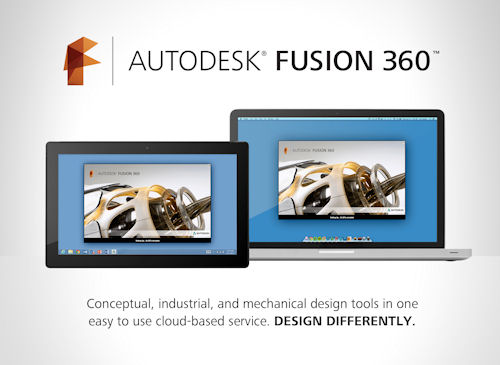October 28, 2013
If when I got into this business lo so many years ago, you told me that evolution would someday tightly integrate industrial design and mechanical design on a single, online platform, I would have snorted in your general direction (bonus points for knowing the reference). That would have been like seeing Nancy Pelosi and Ted Cruz dancing cheek to cheek (more bonus points for knowing the reference). But it so happens that such integration is one of the many things that Autodesk’s Fusion 360 service offers you.
 |
On an elementary level, what Fusion 360 provides is a design system that combines organic modeling with direct modeling. Organic modeling allows you to conceptualize ideas and explore multiple forms easily. Direct solid modeling allows you to make your designs more manufacturable easily. You can import and export the standard CAD formats, which allows you to exchange data between Fusion 360 and other design applications if need be. And, since it’s cloud-based, Fusion 360 doesn’t care if you’re working on a Mac, PC, or mobile device in your office or at some grubby gate in yet another airport. You can do that all for a monthly rate that’s less than my kid’s cell data plan.
Now, if that were it, Fusion 360 would be plenty interesting. But Fusion 360 is an interesting adventure in all sorts of other ways. Take how it enables collaboration. You have two flavors. Let’s call them Yours and Ours.
First, you can set up your design project. Then, from your dashboard you use the Fusion 360 Collaboration functionality to invite people into your project to help design and develop the model. To whatever degree you want, your team members can comment and edit, update versions, and work together on tasks. You can post announcements, manage design information, and share calendars, wikis, surveys, and blogs. Fusion 360 automatically archives, handles versioning, and manages all your data, models, designs, and information so you don’t have to mess with that. And, of course, access to the service as well as to your design groupings is secure.
Second, Fusion 360 has an area that’s called the IdeaStation. Consider it crowdsourcing. This is where you help turn your Fusion 360 into Our Fusion 360 by collaborating directly with other Fusion 360 users and Autodesk to create a design tool based on your feedback and design needs. In the last few days, the Autodesk team released an update to Fusion 360 that includes a bunch of user-requested features. Here are just three:
- Offline mode, so you can work anywhere even if you don’t have an Internet connection or are trying to escape from e-mail
- OBJ and STL mesh import so that you can bring scanned and downloaded models into Fusion 360 as mesh data
- Ray tracing so that you can get decent renderings of your models on the fly
Thanks, Pal. – Lockwood
Anthony J. Lockwood
Editor at Large, Desktop Engineering
Subscribe to our FREE magazine, FREE email newsletters or both!
About the Author
Anthony J. Lockwood is Digital Engineering’s founding editor. He is now retired. Contact him via [email protected].
Follow DE





